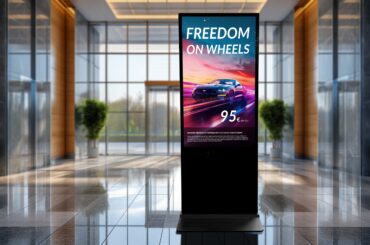When people are financially invested, they want a return. When people are emotionally invested, they want to contribute. – Simon Sinek
The “War for Talent” is Raging
Companies of all sizes and industries are confronted with the question of how to ensure that their employees are motivated. Frequently this task falls on HR’s shoulders in the form of feedback discussions and annual employee surveys. But that doesn’t mean that employees are engaged and motivated.
Finding an answer that works for your company is increasingly important in this day and age. The baby boomers are on their way out of the workforce, leaving employers to search for new talent. Additionally, firms are finding that as this shift is also accompanied by a gap in knowledge and skills among the generational groups.
Into this gap comes Generation Y or Millennials, usually thought of as between mid-twenties to mid-thirties with a penchant for hedonism characterized by a technology-driven and feel-good attitude. Or at least that is the general stereotype that one hears repeated over and over by the media.
Because the signs are clear that companies need to prepare themselves for the upcoming generational shift from Baby Boomers to Millenials. This shift represents not just a loss of critical knowledge, especially in many specialist and managerial positions, but also a shift in attitudes in the workplace.
The key to making this transition successful for many firms will depend on if they are able to ensure that their employees are motivated and engaged.
$100 Million Potential Savings per Year
The scope of the problem with employee motivation has been tracked and analyzed by Gallup for the last few decades. And while the United States has higher employee engagement than most of the rest of the world, it still only stands at 33% in the most recent polling.
What makes this so serious is that the lack of engagement has a direct effect of between $80 to $100 million per year on the bottom line. The biggest hit comes from higher absenteeism rates for those employees who are unmotivated and choose to disengage from the workplace. This results in a financial hit to companies that is especially hard for small business.
So how can you devise a strategy to reach out and motivate your employees that doesn’t break the bank?
The Two Sides of Motivation
Motivation consists of two main components:
Extrinsic motivation refers to being motivated based upon the expected consequences of a certain behavior. For example, an employee might be motivated by an expected financial return on their hard work. Additional examples of this type of motivation are bonus payments or a positive assessment on a performance review.
Intrinsic motivation, on the other hand, refers to having an internal desire to complete a task. Instead of focusing on completing a task because you get something from someone else when you are motivated intrinsically the only person driving behavior is you.
And while there is little doubt that extrinsic motivation in the form of monetary rewards can be successful, they tend to only drive short-term behaviors. In the long term, intrinsic motivation in the workplace is desired because it will ensure that employees stay motivated and engaged.

5 Approaches to Increase the Motivation of the Team
Work-life balance, home office and flex time are just a few of the terms we immediately think of when it comes to employee motivation.
But what promises long-term corporate success in the competition for high-performance employees?
Collaborative working atmosphere: The idea of having a strong work-life balance is a focus of the younger generations. But this doesn’t just mean providing employees with unlimited time off. Instead, employers can focus on creating a welcoming and friendly atmosphere in the office that promotes cohesion among colleagues.
The key is to ensure that your corporate philosophy is being communicated both internally and externally. Events such as training days, company leisure days and entrepreneur classes can help to convince potential applicants of the direction of the company and generate positive attention and buzz.
In addition to team-building measures, an appealing office design helps to solidify the emphasis on work-life balance. The right interior can help to reflect a corporate culture that ensures that employees are put first.
Creating this kind of atmosphere doesn’t have to cost a fortune. Some easy examples are creating cafes or break rooms that are inviting and allow people to get together for informal discussions. Silent rooms and Foosball tables help to round out spaces where employees feel comfortable. Because productivity increases when employees are working in a space that feels comfortable.
In addition, well-placed screens can be used to create a modern ambiance. Corporate goals, sales, and upcoming company events can be communicated in an eye-catching manner and create transparency between companies and employees – a multiplier in terms of motivation.
Flexibility in the workplace: Here younger companies frequently have an edge over more established firms. They focus on ensuring that “agile” and “lean” are more than just buzzwords.
Flextime, trust hours and free availability of holidays show only a handful of possible approaches. Netflix is an example of a company that has taken the concept of flexibility to the next level by removing any restrictions on employee leave. You read that right unlimited leave.
Perhaps this kind of flexibility isn’t possible for your company or industry, that doesn’t mean that you can’t incorporate flexibility in other areas. For example, you can design your workspaces to allow for more flexibility and encourage working across teams and departments.
This trend is supported by technical progress. Cloud-based software solutions help to facilitate site-independent work. Just open your laptop, log into the cloud and get started, no matter where you are located.
However, as you introduce more flexibility into your workplace, it is also important to ensure everyone is on the same page. This is where incorporating digital elements, such as a digital seating plan can be usefully in locating where a colleague is sitting. Additionally, it can display information such as which conference rooms are reserved. This allows everyone to be aware of changes without clogging up everyone’s inbox.
Regular feedback: The concept of regular feedback has been hard-wired into most companies by now. However, given the expectations of the younger generations, many companies will need to look at their company feedback plans and determine if they need to be refined and expanded. A once a year performance review meeting is not going to cut it any longer.
Large companies such as Google and IBM have shifted their thinking towards quarters. They utilize the Objective and Key Results (OKR) method to break down their corporate goals into milestones, which are then spread throughout the company down to the individual level. This allows every employee to see what they are contributing towards the overall business goals. It also helps to foster intrinsic motivation and provide a sense of belonging to employees.
To maximize the effect, you can use a screen in the office to display the status of department goals and increase general transparency.
Varied tasks: Most people prefer new challenges to doing the same thing over and over again. Additionally, the introduction of a new task provides the employee with a chance to shine and learn new skills that they can use in the future.
Joint activities: By providing off-site company events, companies provide an opportunity to have interactions with a wide variety of individuals in a relaxed and fun atmosphere. Having a common hobby or interest helps to create a strong bond and reduces existing barriers between people. Company outings, sports activities, or joint evening meet-ups help to find something that allows everyone to find a place that they feel welcome. Additionally, recurring sports events can have a positive impact on the sickness rate, as regular exercise improves overall health and counteracts common diseases such as back pain.

Employer Branding
Another reason that companies need to think about motivation is that new employees are increasingly aware of a company’s reputation. Forums such as Glassdoor make it easy for potential applicants to determine if the career page consists only of phrases or if the philosophy described is actually being lived by the employees.
This process is referred to as employer branding. It is important for a company to define a clear message and to present itself accordingly – both internally and externally. An employer should view themselves as a brand whose image should be clearly defined in advance. And your employees serve as the strongest brand ambassadors. With their help, the company is able to more easily find new employees that fit into their corporate culture.
Those who motivate their employees have a better chance at winning the war for talent. It is the small things that have the power to turn employees into brand ambassadors.





